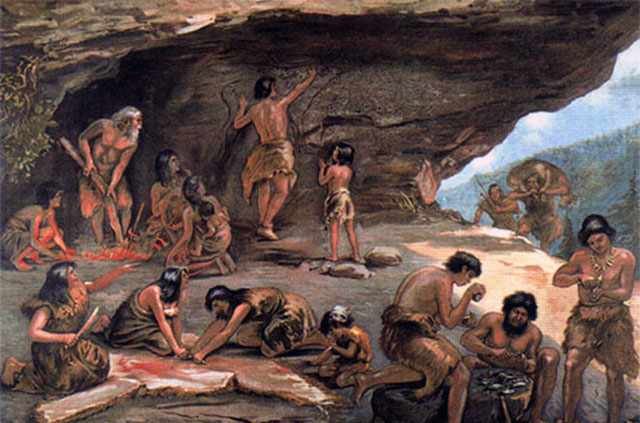You have 3 free guides left 😟
Unlock your guidesUnit 1 Overview: Global Prehistory, 30,000-500 BCE
3 min read•june 18, 2024
Laurie Accede
Charly Castillo
Laurie Accede
Charly Castillo
You may look at the years for this unit and think wow, these works must be really primitive and simple, but this is anything but the case. The works that we'll be describing in this guide are advanced for their time (and even now in the modern age) and required lots of time and artistry to create. The artists of the and periods didn't have access to the same materials that we do nowadays, and instead used media, or materials, that were readily available, like , stone, and bones. Also, people had very little time to create art before the , which is when people were assigned specific jobs and responsibilities. This makes the artistic works of this unit all the more impressive (cue the round of applause 👏).
Contextualization (AKA the Historical Background)
As briefly mentioned before, Unit 1 is split into two periods—Paleolithic (30,000 BCE-8,000 BCE) and Neolithic (8,000 BCE-3,000 BCE). These ranges can be even longer depending on geographical location, but these are the generally accepted years by most art historians.
During the Paleolithic period, people were hunter-gathers, meaning that they did not grow food, and instead hunted and foraged or their daily meals. This lifestyle is reflected in the art of the time, since many of the works have to do with animals and their relationship with humans. Because people during this time were always on the move either finding food or protecting themselves from being eaten, many of their works are small and easily portable. These two details support the idea that prehistoric art was influenced by human's active lifestyles.

Then came the Neolithic period and everything began to change. People began settling into (usually near rivers), and this proximity allowed the specialization of labor. Living a sedentary life also allowed for the beginning of agriculture in the and the of animals, which was a lot safer and reliable than being a hunter-gatherer.
Religion is said to have had a large influence on the art created in this unit. Most prehistoric people practiced , a religion where followers believe that people called shamans can interact with the spirit world. These spirits were called for many reasons, including to heal those who were sick, ensure a successful harvest (especially since these were predominantly agricultural societies), or give advice. Works in this unit, such as the and , are believed to have had a religious or ritualistic purpose because of the worldwide practice of shamanism and their location.
While it is unknown why these early people created art, most artwork was designed to serve a purpose. A common theme in Prehistoric art is the presence of community and survival, ahese works continue to serve as evidence about the lives that walked this plant before us.
Summary of Unit 1 Works
| Art | Location | Form | Date |
| Keetmanshoop, Namibia | Charcoal on stone | 25,500–25,300 BCE | |
| Lascaux, France | Pigment on rock | 15,000–13,000 BCE | |
| Tequixquiac, Mexico | Bone | 14,000–7,000 BCE | |
| Tassili n'Ajjer, Algeria | Pigment on rock | 6,000–4,000 BCE | |
| Susa, Iran | Painted terra-cotta | 4,200–3,500 BCE | |
| Arabian Peninsula | Sandstone | 4000 BCE | |
| Jade Cong | Liangzhu, China | Carved jade | 3,300–2,200 BCE |
| Wiltshire, United Kingdom | Sandstone | 2500-1600 BCE | |
| The Ambum Stone | Ambum Valley, Papua New Guinea | Greywacke | 1500 BCE |
| Tlatilco, Mexico | Ceramic | 1200-900 BCE | |
| Reef Islands, Solomon Islands | Incised terra-cotta | 1000 BCE |
© 2024 Fiveable Inc. All rights reserved.
AP® and SAT® are trademarks registered by the College Board, which is not affiliated with, and does not endorse this website.
